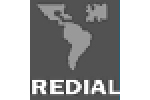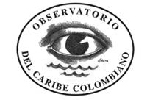Chivers, Ian.,
Introduction to Programming with Fortran [electronic resource] / by Ian Chivers, Jane Sleightholme. - Cuarta edición. - XXXII, 956 p. : online resource.
Incluye referencias bibliográficas e índice.
Overview -- Introduction to Problem Solving -- Introduction to Programming Languages -- Introduction to Programming -- Arithmetic -- Arrays 1: Some Fundamentals -- Arrays 2: Further Examples -- Whole Array and Additional Array Features -- Output of Results -- Reading in Data -- Summary of I/O Concepts -- Functions -- Control Structures and Execution Control -- Characters -- Complex -- Logical -- Introduction to Derived Types -- An Introduction to Pointers -- Introduction to Subroutines -- Subroutines: 2 -- Modules -- Data structuring in Fortran -- An Introduction to Algorithms and the Big O Notation -- Operator Overloading -- Generic Programming -- Mathematical and Numerical Examples -- Parameterised Derived Types (PDTs) in Fortran -- Introduction to Object Oriented Programming -- Additional Object Oriented Examples -- Introduction to Submodules -- Introduction to Parallel Programming -- MPI - Message Passing Interface -- OpenMP -- Coarray Fortran -- C Interop -- IEEE Arithmetic -- Derived Type IO -- Sorting and Searching -- Handling Missing Data in Calculations -- Converting from Fortran 77 -- Graphics Libraries - Simple Dislin Usage -- Abstract Interfaces and Procedure Pointers -- Appendices: A Glossary -- B Attribute Declarations and Specifications -- C Compatibility.-D Intrinsic Functions and Procedures.-E Text Extracts, English, Latin and Coded -- F Formal Syntax G Compiler Options Index.
Esta cuarta edición presenta nuevos ejemplos sobre submódulos, E/S de tipo derivado, programación orientada a objetos, interfaces abstractas y punteros de procedimiento, interoperabilidad C, clasificación y búsqueda, estadísticas y conversión a versiones más modernas de Fortran. Destaca las características principales del lenguaje del Fortran moderno, que incluye la tipificación de datos, el procesamiento de matrices, las estructuras de control, las funciones, las subrutinas, los módulos y submódulos, los tipos definidos por el usuario, los punteros, la sobrecarga del operador, la programación genérica, la programación paralela, las interfaces abstractas, los punteros de procedimientos.
9783319755021
Ciencias de la computación.
Ingeniería de software.
Lenguajes de programación, compiladores, interpretadores.
Técnicas de programación.
Ingeniería de software.
005.13
Introduction to Programming with Fortran [electronic resource] / by Ian Chivers, Jane Sleightholme. - Cuarta edición. - XXXII, 956 p. : online resource.
Incluye referencias bibliográficas e índice.
Overview -- Introduction to Problem Solving -- Introduction to Programming Languages -- Introduction to Programming -- Arithmetic -- Arrays 1: Some Fundamentals -- Arrays 2: Further Examples -- Whole Array and Additional Array Features -- Output of Results -- Reading in Data -- Summary of I/O Concepts -- Functions -- Control Structures and Execution Control -- Characters -- Complex -- Logical -- Introduction to Derived Types -- An Introduction to Pointers -- Introduction to Subroutines -- Subroutines: 2 -- Modules -- Data structuring in Fortran -- An Introduction to Algorithms and the Big O Notation -- Operator Overloading -- Generic Programming -- Mathematical and Numerical Examples -- Parameterised Derived Types (PDTs) in Fortran -- Introduction to Object Oriented Programming -- Additional Object Oriented Examples -- Introduction to Submodules -- Introduction to Parallel Programming -- MPI - Message Passing Interface -- OpenMP -- Coarray Fortran -- C Interop -- IEEE Arithmetic -- Derived Type IO -- Sorting and Searching -- Handling Missing Data in Calculations -- Converting from Fortran 77 -- Graphics Libraries - Simple Dislin Usage -- Abstract Interfaces and Procedure Pointers -- Appendices: A Glossary -- B Attribute Declarations and Specifications -- C Compatibility.-D Intrinsic Functions and Procedures.-E Text Extracts, English, Latin and Coded -- F Formal Syntax G Compiler Options Index.
Esta cuarta edición presenta nuevos ejemplos sobre submódulos, E/S de tipo derivado, programación orientada a objetos, interfaces abstractas y punteros de procedimiento, interoperabilidad C, clasificación y búsqueda, estadísticas y conversión a versiones más modernas de Fortran. Destaca las características principales del lenguaje del Fortran moderno, que incluye la tipificación de datos, el procesamiento de matrices, las estructuras de control, las funciones, las subrutinas, los módulos y submódulos, los tipos definidos por el usuario, los punteros, la sobrecarga del operador, la programación genérica, la programación paralela, las interfaces abstractas, los punteros de procedimientos.
9783319755021
Ciencias de la computación.
Ingeniería de software.
Lenguajes de programación, compiladores, interpretadores.
Técnicas de programación.
Ingeniería de software.
005.13











